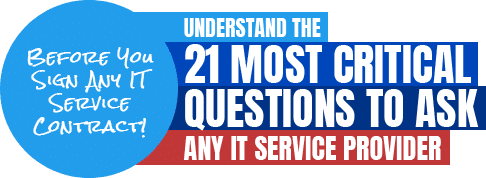
In less than a decade cyber liability insurance quickly jumped from “nice to have” to “need to have” – and for good reason. Businesses are eternally exposed to cyber risks, in this case, ransomware, downtime, virus attacks, to more sophisticated AI-backed attacks.
Cyber liability insurance protects against the risks brought forth by such threats. But to really shield your business in the aftermath of an incident, careful thought into the available cyber insurance coverage options has never been more important.
First-Party Coverage and Third-Party Coverage
Like commercial insurance, cyber insurance only provides coverage for certain risks (or their subsequent incidents) as defined in the policy. Rogue employees, utter ignorance, and the company’s failure to act on its internal data protection policies make unfavorable business for insurers, as they may decline to cover the resulting cyber risks.
Before purchasing cyber insurance, think about your business’s needs: how much insurance suffices protection against your most imminent risks, such as downtime, ransomware, equipment damage, and lawsuits in case of breach? Next, think about who will be affected by cyber incidents.
That brings us to first-party cyber insurance and third-party cyber insurance.
To understand the differences between first-party and third-party insurance, we analyzed them across three key sectors: the sphere of coverage, major costs covered, and the main beneficiaries of each policy.
1. Sphere of Coverage
Cyber insurance is still in its infancy and lacks a long trail of historical data as we see with other mature industries, such as car insurance. Besides, insurers find it difficult to weigh the risks they uptake and provide more robust coverage when the insured also do not fully understand the risks they’re exposed to.
This does not necessarily spell a lack of options for the insured: in fact, it’s quite the opposite. Cyber insurers have a diverse pool of coverage options that benefit both the policyholder and their customers.
First-party insurance is only concerned with the policyholder’s direct financial risk – not those extended to other stakeholders as a result of transacting with a compromised policyholder. This type of insurance is particularly important for businesses that store and process personal data. As no one is 100% immune to cyber risks, taking measures to protect your business against financial risks associated with cyber attacks falls well within your collective risk management strategy.
Third-party insurance provides a protective umbrella for stakeholders that would be affected by fallout from a cyber incident. Risks extending to clients, vendors, and governing agencies as a result of the company’s shortcomings are covered by third-party insurance.
2. Major Costs Covered
In a spate of record cyber attacks, it can be difficult to put an accurate figure on the actual losses businesses may experience without some kind of protection. On average, small businesses stand to lose $3.31 million with every breached record costing an eye-popping $164.
Of course, other direct costs and losses remain temporarily obscure until after the incident. They include damaged systems, compromised network equipment that needs replacement, revenue losses, non-compliance fees, and even theft.
With first-party cyber insurance, the insurer shoulders direct financial risks on the business. In this case, the cost of repair for damaged equipment, communication costs, data recovery costs, loss of revenue, extortion fees (ransom), and forensic investigations – to name a few.
Third-party insurance, on the other hand, covers claims from stakeholders, customers, clients, and vendors, among other third parties. Some of the costs covered include out-of-court settlements, damages, and litigation fees, should the third party take legal action against the business.
3. Main Beneficiaries
Any business with an ounce of IT infrastructure should consider cyber liability insurance. In particular, companies that store customer names, credit card details, health information, and social security numbers are susceptible to high-risk attacks.
In this regard, healthcare providers, financial advisory firms, and government contractors need cyber liability insurance to supplement their compliance requirements and communicate their commitment to data safety to stakeholders.
At a minimum, individual businesses need first-party insurance as part of their ongoing risk management strategy. Their contributions in terms of monthly premiums help restore normal operations, reconfigure security measures, and cover direct liabilities that would otherwise impede normal operations in cyber incidents.
In connection to the broader risk management strategy, third-party cyber insurance absorbs some of the burden of paying large amounts to claims. Beyond this, third-party insurance also helps businesses restore their brand image after a cyber incident.
Key Things to Consider While Shopping for Cyber Insurance
As discussed, not all cyber insurance is equal. The first thing to consider when buying cyber insurance – or any type of insurance for that matter – is your business needs. Small businesses often have a large attack surface, meaning loopholes that hackers can find and exploit to their advantage.
One such gap is employee ignorance or insider threats. Deliberate and involuntary human error may leave vital credentials exposed, compromising an entire network’s security. However, due to their relatively fewer number of assets, small businesses do not need large insurance coverage as larger businesses do.
So, how do you strike the perfect balance between cost and your insurance needs, and find the right insurance policy? Here are a few guiding factors:
Understand Your Coverage Options
Comprehensive coverage is paramount to quick restoration of business activity after an incident. Companies that process and store user data ought to pay attention to their insurer’s coverage; for instance, some insurers may cover data theft and extortion fees, but at the same time, decline assuming the risk if it is connected to inefficient in-house data protection measures.
Consider further protection with the Tech Errors & Omissions (Tech E & O); an insurance cover designed to absorb the risks as a result of the service provider’s actions (or lack of action).
Limits and Exclusions
Perhaps the most important consideration when shopping for cyber liability insurance is the limits and exclusions that the insurer has set in place. Cyber risks can vary widely depending on the business size, and business managers should seek insurers that meet their needs.
However, defining these needs becomes a challenge, particularly for insurers due to the utter lack of sufficient insurance funds and vast experience in handling cyber insurance settlements.
As such, insurers may specify the limitations, which refer to the maximum payouts for certain claims categories. Ransomware incidents, for instance, garnered the largest payouts, costing insurance companies $485,000 per claim on average.
Study the policy outlines to understand what is excluded. Depending on the insurer, criminal and compliance fines may be excluded in the policy. It is always advisable to study your insurance policy to find solutions for what has been excluded.
Insurer Reputation
It is also important to do your due diligence and research the insurance company’s reputation before purchasing their product. A good insurer demonstrates transparency in their transactions. Rather than upselling their clients, good insurers help you find lasting solutions to your challenges. But above all, good insurers are always in the know regarding the challenges affecting your specific industry vertical.
Choose a company that settles claims promptly, as that is a reliable indicator of the level of support you can expect when you need it.
Pricing
In the world of cyber insurance, more expensive doesn’t always mean better. On the contrary, the best cyber insurance is one that covers your needs; nothing less. Before finalizing a policy, compare various policies, with devoted attention to their unique offerings. Although opting for the most affordable option can be tempting, ensure that the coverage you choose is best suited for your business needs.
Build a Resilient Future with Cyber Liability Insurance
At the end of the day, insurers want to be confident that the policyholder meets the minimum data protection measures, which translates to fewer data theft and breach risks. Still, finding the right cyber liability insurance coverage for your business may call for an expert’s opinion, so don’t hesitate to get in touch with BoomTech’s cybersecurity experts for more information regarding your business’s cyber insurance.
Download the Cyber Liability Insurance Checklist.
Categories
Hear from Philipp Baumann, owner and founder of BoomTech:


